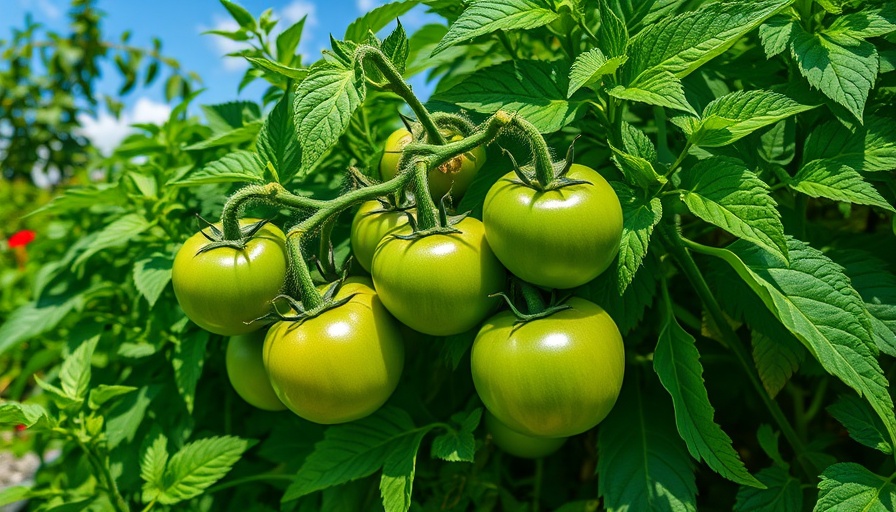
Creating Seasonal Charm with an Okra Holiday Wreath
For homeowners who take pride in their gardens, transforming seasonal produce into home décor can be a creative and rewarding endeavor. The Okra Holiday Wreath offers an innovative way to blend gardening with festive spirit, showcasing the beauty and versatility of this unique vegetable. This art form not only enhances your home’s aesthetic but also promotes sustainability by using your homegrown produce.
In Garden to Decor: Okra Holiday Wreath, we delve into the art of using fresh produce in seasonal décor, highlighting the relationship between gardening and creativity.
Unlocking the Potential of Your Garden's Harvest
Okra, often associated with southern cuisine, is a plant that thrives in warm climates and can be a joy to grow in home gardens. When it comes to crafting a wreath, okra pods not only add a pop of color but also tell a story—the story of where they come from. By incorporating plants and vegetables you have nurtured yourself, you elevate your home décor while celebrating your gardening efforts.
The Allure of Using Edibles in Decor
Edible plants in decorating, like the okra wreath, echo a growing trend toward sustainability and self-sufficiency. As gardening enthusiasts seek to bridge the gap between cultivation and artistry, using okra in a holiday wreath stands out as both visually striking and environmentally friendly. Homeowners benefit from a vibrant and lively decorative option that minimizes waste and encourages creativity.
Easy Steps to Craft Your Okra Wreath
Creating your own okra wreath can be straightforward and fun. Here’s a simple guide to get you started:
- Gather Supplies: You will need dried okra pods, a wreath base (such as straw or foam), hot glue, and embellishments like ribbons or pinecones.
- Prepare the Okra: Ensure your okra is fully dried before using it. This helps preserve the appearance and scent.
- Assemble the Wreath: Begin by gluing the dried okra pods around the wreath base. Layer them for a fuller look.
- Add Your Personal Touch: Incorporate other decorative elements to reflect your style, whether that’s twinkly lights, burlap ribbons, or seasonal foliage.
- Display: Hang your wreath proudly at your home entrance or as a centerpiece indoors.
Celebrating Artistry and Community
The process of creating an okra wreath also fosters community connections. Gardening is often a shared activity that can bring people together, whether through community gardens, farmer's markets, or holiday gatherings. Sharing your crafts or even hosting a wreath-making party can strengthen bonds while encouraging others to explore their green thumbs.
Reflecting on the Tradition of Vegetable Decor
Throughout history, the use of vegetables in decoration is a tradition that transcends cultures. From the harvest festivals of ancient civilizations to modern eco-friendly decorations, vegetable wreaths celebrate the bounty of seasonal produce. In a time where many seek to reconnect with food sources and sustainability, crafting wreaths from vegetables allows homeowners to engage in a meaningful tradition. It not only beautifies living spaces but also serves as a reminder of the origins of our food.
Future Trends in Gardening and Decoration
As homeowners continue to embrace gardening, trends are pointing toward more organic and sustainable approaches to home décor. The use of homegrown vegetables in creating decorations reflects a growing commitment to sustainability alongside aesthetics. By tapping into this movement, you not only uplift your home but also promote a greater awareness of food sources and environmental responsibility.
Embracing the Joy and Benefits of Gardening
This holiday season, engaging with your garden does more than beautify—it's a powerful reminder of the joy that comes from nurturing life. As homeowners explore creative ways to blend gardening with home decoration, the Okra Holiday Wreath stands as a perfect intersection of beauty, creativity, and sustainability. So, why not put on your crafting hat and give it a go? Celebrate your hard work and creativity by showcasing your gardening success!
In Garden to Decor: Okra Holiday Wreath, we see how everyday items like okra can be turned into exquisite decorations. This process invites reflection on sustainability and creative reuse, leading to more enriching home experiences.
 Add Row
Add Row  Add
Add 




Write A Comment